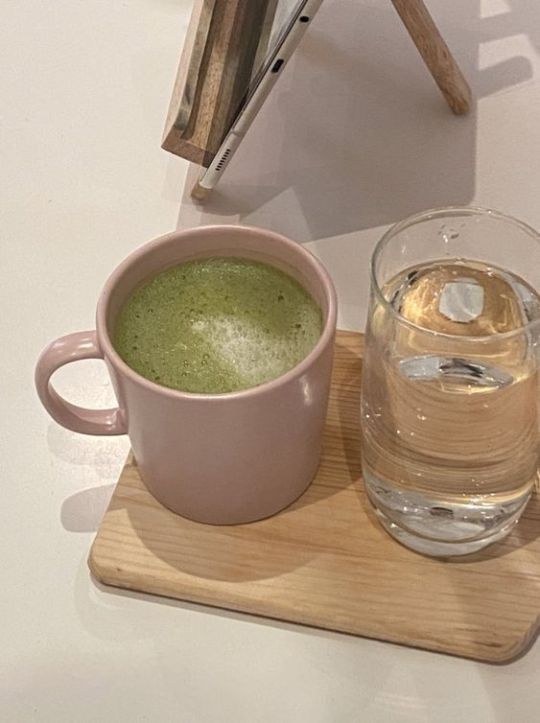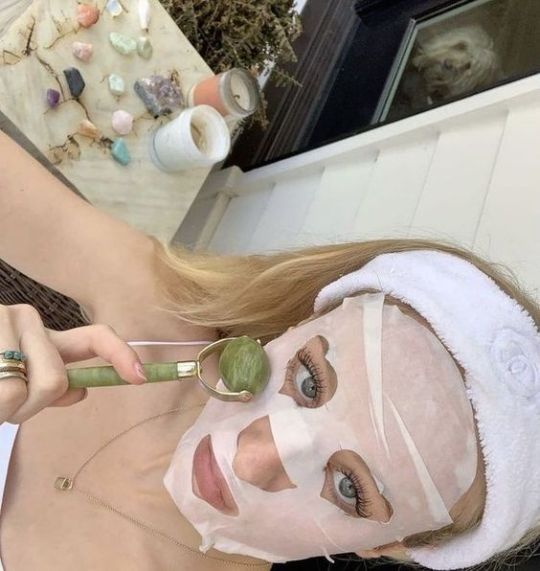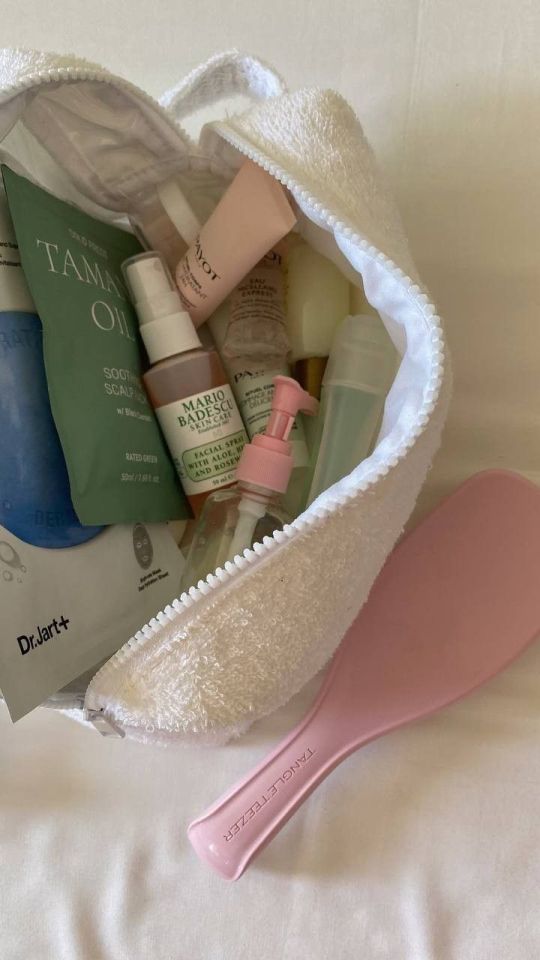#omega-6 fatty acids
Explore tagged Tumblr posts
Text
youtube
#Liquid Gold#How Natural Oils Revive Skin Hydration and Elasticity#Natural Oils#Oils#wrinkles#oils for wrinkles#oils to fight wrinkles#Essential fatty acids#Skin hydration#Skin elasticity#Natural oils#Omega-3 fatty acids#Omega-6 fatty acids#Healthy skin barrier#Collagen production#Moisturizing oils#Skin nourishment#Hydrated skin#Organic skincare#Anti-aging oils#Skin health#Linoleic acid#Flaxseed oil benefits#Argan oil hydration#Rosehip oil elasticity#Youtube
0 notes
Text
Seed oil facts - are they really that bad for your health
Information surrounding seed oils can be confusing. A quick search on Google will bring up a number of conflicting articles and social media posts, many of which suggest seed oils are detrimental to human health and others that say those claims are overblown and even false. Among those who are in the anti-seed oil camp is Robert F. Kennedy Jr, who is about to become the leader of the Department…
0 notes
Text
How to Balance Your Intake of Omega-3 and Omega-6 Fatty Acids: A Comprehensive Guide
Balancing omega-3 and omega-6 fatty acids is essential for optimal health, yet achieving the right ratio can be challenging given today’s dietary habits. These polyunsaturated fats are critical for many bodily functions, but the balance between them is what truly matters. While omega-3s are known for their anti-inflammatory effects, omega-6s tend to be pro-inflammatory if consumed in excess. In…
#balanced nutrition#diet tips#healthy fats#heart health#inflammation reduction#omega-3 fatty acids#omega-6 fatty acids
0 notes
Link
#pioneering marketdigits consulting and advisory private limited#polyunsaturated fatty acids#fatty acids market#omega-3 fatty acid#omega-6 fatty acid
0 notes
Text
#eye health#eye care#eye health supplements#eye health matters#essential fatty acids#omega fatty acids#healthychoices#omega 3 fish oil#omega 6 fish oil#epa#dha#ala#omega 3 for eyes#eye sight#eyes#healthyeating
0 notes
Text
Know How Omega-3 And Omega-6 Fatty Acids Help to Maintain Your Pet’s Health
Fatty acids are types of polyunsaturated fats that are essential for dogs’ and cats’ health. They are mainly classified into omega-3 and omega-6 fatty acids, which have different benefits and sources.Omega-6 fatty acid

0 notes
Text
Insects and spiders are important elements in the food webs of aquatic and terrestrial ecosystems. With declines in their biodiversity, the food supply for birds, fish, reptiles, amphibians and small mammals is not only becoming scarcer, but also poorer in important fatty acids, as an international research team led by scientists from Eawag and WSL has recently demonstrated. Animals not only need sufficient calories to function, but also essential nutrients—including omega-3 and omega-6 polyunsaturated fatty acids (PUFA). Insects and arachnids are an important source of these essential fatty acids for birds, hedgehogs, lizards and the like. However, the content depends on the specific types of insects and spiders consumed.
Continue Reading.
119 notes
·
View notes
Text
The 13 Best Foods For Healthy Skin
Your skin is not only the body's largest organ but also a reflection of your overall health. Maintaining healthy and radiant skin requires more than just external skincare products; it begins with the nutrients you provide your body from the inside. A well-balanced diet rich in essential vitamins, minerals, and antioxidants can do wonders for your skin. In this article, we'll explore the 13 best foods for achieving and maintaining healthy, glowing skin.
1. Salmon:
Salmon is a fatty fish that's high in omega-3 fatty acids. These healthy fats help keep your skin moisturized and supple, reducing the appearance of fine lines and wrinkles. Omega-3s also have anti-inflammatory properties that can soothe skin conditions like eczema and psoriasis.
2. Avocado:
Avocados are packed with healthy fats, vitamins E and C, and antioxidants. These nutrients help keep your skin hydrated, protect it from UV damage, and promote collagen production, which is essential for skin elasticity.
3. Sweet Potatoes:
Sweet potatoes are rich in beta-carotene, a powerful antioxidant that can give your skin a healthy glow by protecting it from sun damage and preventing premature aging.
4. Berries:
Berries like blueberries, strawberries, and raspberries are loaded with antioxidants, particularly vitamin C. Antioxidants help combat free radicals, reducing skin cell damage and promoting a more youthful appearance.
5. Walnuts:
Walnuts are an excellent source of omega-3 fatty acids and vitamin E, which help maintain the skin's moisture and protect it from oxidative stress.
6. Spinach:
Spinach is rich in vitamin A, which is essential for skin health. It helps repair skin tissues, prevent acne, and maintain a healthy complexion.
7. Green Tea:
Green tea contains polyphenols and antioxidants that protect the skin from UV radiation and reduce the risk of skin cancer. Drinking green tea regularly can also help combat inflammation and keep your skin looking fresh.
8. Tomatoes:
Tomatoes are a great source of lycopene, an antioxidant that can reduce the risk of sunburn and skin aging. It also promotes collagen production and skin elasticity.
9. Dark Chocolate:
High-quality dark chocolate (70% cocoa or higher) is rich in antioxidants, specifically flavonols, which can improve skin texture, hydration, and blood flow, giving your skin a healthy glow.
10. Almonds:
Almonds are rich in vitamin E, a powerful antioxidant that helps protect your skin from harmful UV rays and environmental damage.
11. Yogurt:
Yogurt is packed with probiotics, which can promote a healthy gut. A balanced gut microbiome can lead to clearer skin by reducing inflammation and preventing acne.
12. Carrots:
Carrots are another great source of beta-carotene, which can help reduce skin dryness and promote a more youthful appearance.
13. Oats:
Oats are a good source of complex carbohydrates and fiber. They can help stabilize blood sugar levels, reducing the risk of acne and promoting clear skin.
While these foods can be a valuable addition to your diet for healthier skin, remember that no single food can work miracles. A well-rounded diet that includes a variety of nutrient-rich foods, along with proper hydration, is essential for achieving and maintaining radiant skin. Additionally, don't forget to protect your skin from excessive sun exposure, get enough sleep, and maintain a consistent skincare routine for the best results. Healthy, glowing skin is the result of both internal and external care, so make these foods a part of your daily routine and watch your skin thrive.

#skincare#skincare tips#beauty tips#glowing skin#skincare routine#antiaging#natural skin care products#acne#skin care#skin treatment#health tips#health#healingjourney#healthy skin#healthy#nutrition#healthy living#healthy eating#healthyfood
665 notes
·
View notes
Text
#Liquid Gold#How Natural Oils Revive Skin Hydration and Elasticity#Natural Oils#Oils#wrinkles#oils for wrinkles#oils to fight wrinkles#Essential fatty acids#Skin hydration#Skin elasticity#Natural oils#Omega-3 fatty acids#Omega-6 fatty acids#Healthy skin barrier#Collagen production#Moisturizing oils#Skin nourishment#Hydrated skin#Organic skincare#Anti-aging oils#Skin health#Linoleic acid#Flaxseed oil benefits#Argan oil hydration#Rosehip oil elasticity
0 notes
Text

Seafood Cioppino
Ingredients:
▫️Seafood:
* 1 pound salmon fillet, cut into chunks
* 1 pound mussels, scrubbed
* 1 pound shucked oysters
* 1/2 pound cleaned and deveined shrimp
* 6 anchovy fillets, minced
▫️Broth:
* 1 quart fish broth or clam juice
* 1 cup dry white wine
* 1 large onion, chopped
* 2 cloves garlic, minced
* 2 carrots, chopped
* 2 celery stalks, chopped
* 1 bay leaf
* 1 teaspoon dried oregano
* 1/2 teaspoon red pepper flakes
* Salt and pepper to taste
Instructions:
▫️Rinse the mussels under cold water and discard any with open shells that don't close when tapped.
▫️In a large pot, heat olive oil over medium heat. Add the onion, garlic, carrots, celery, bay leaf, oregano, and red pepper flakes. Cook until softened, about 5 minutes.
▫️Pour in the fish broth (or clam juice) and white wine. Bring to a boil, then reduce heat and simmer for 15 minutes.
▫️Add the salmon chunks, mussels, oysters, and shrimp to the pot. Cover and cook until the mussels open and the salmon is cooked through, about 5-7 minutes.
▫️Discard any unopened mussels. Season with salt and pepper to taste. Serve hot with crusty bread for dipping.
This dish offers numerous health benefits. It is rich in omega-3 fatty acids from the salmon, which support heart health by reducing triglycerides, improving blood pressure, and decreasing inflammation. Also, salmon, mussels, and oysters are excellent sources of lean protein, essential for building and repairing tissues, boosting metabolism, and maintaining satiety.
Furthermore, oysters and mussels are packed with essential vitamins and minerals like zinc, selenium, iron, and B12, crucial for various bodily functions, including immune health, cell growth, and energy production. Moreover, the healthy fats in salmon and seafood provide energy, support brain function, and maintain healthy skin and hair.
#foodie#food photography#food fight#food foodie#comfort food#fast food#healthy food#food for thought#food#foodpics#foodmyheart#foodlover#tw food#lunch recipes#pasta recipes#pasta recipe#salad recipes#soup recipe#recipe#reciprocidade#reciprocity#recipies#recipes#cozy autumn#cozy art#cozyhome#cozy cozy#cozy mystery#healhtylifestyle#healthy salad recipes
73 notes
·
View notes
Text
Healthy Skin



Cleansing and Moisturizing
Have short showers in warm water. Avoid long showers with hot water because it can strips helpful and necessary oils from your skin.
Wash your face twice daily. You should wash your face in the morning when you get up, and in the evening before going to bed.
Pat your skin dry. Instead of rubbing dry with a towel, gently pat your skin with a towel and let the remaining moisture air dry. This applies to both the skin on your face and on your body.
Exfoliate once or twice a week.
Remove your makeup before going to sleep. This will prevent breakouts.
Clean your makeup brushes regularly. This will prevent the build-up and spread of acne-causing bacteria.
Avoid touching your face as much as possible.
Healhy Diet
Fruits and vegetables. They are great for your skin and you body, since they are full of vitamins and antioxidants.
Food rich in omega. Fats are necessary for healthy skin, especially omega-3 and omega-6 fatty acids. Good sources of omega include: walnuts, olive and canola oil, flaxseeds, sardines, mackerel and salmon.
Food rich in antioxidants and selenium. they prevent damage done by free radicals, which contribute to wrinkles, tissue damage, and dry skin. Foods high in antioxidants include: whole grains, berries, apricots, beets, squash and sweet potatoes, tangerines, beans, and olive oil. While foods that contain selenium include: whole-wheat pasta, button mushrooms, beef and turkey, oysters, shrimp and crab, snapper and cod, and some other fish.
Food rich in coenzyme Q10. Coenzyme Q10 is an antioxidant that be found in: whole grains, fish, organ meats, and soybean, canola, and sesame oils.
Food rich in flavonoids. Flavonoids have both antioxidant and anti-inflammatory properties. It can be found in: dark chocolate and green tea.
Drink water. At least 2L daily.
Avoid added sugars. As well as processed or refined carbohydrates and unhealthy fats.
Lifestyle
Get 7 to 9 hours of sleep each night. Not getting enough sleep can make your skin appear dull and sallow. when we sleep, our bodies secrete certain growth hormones, and this leads to collagen production.
Reduce your stress levels. Yoga, meditation and breathing exercises can help you to relieve stress.
Exercise on a daily basis. Exercise increases blood flow to your skin and supplies it with oxygen and nutrients.
Protect your skin from the sun. A minimal amount of UV exposure is necessary for vitamin D production (20 minutes is enough for most people), but too much sun can damage your skin. Choose a sunscreen with a minimum of 15 SPF, wear it every day and avoid the sun between 10 am and 2 pm.



#coquette#pink pilates girl#hyper feminine#victoria secret angel#girly girl#self care#self improvement#self healing#self love#high maintenance#glow up#cinnamon girl#clean girl#dream girl#green juice girl#it girl#pinterest girl#that girl#pink blog#pink pilates princess#pinterest#aestethic#feminine#feminine energy#soft feminine#skincare#healthy
621 notes
·
View notes
Text
Endometriosis is a chronic condition where tissue similar to the lining of the uterus grows outside of it, causing symptoms like pelvic pain, heavy menstrual bleeding, pain during sex, and infertility. Treatment for endometriosis depends on the severity of the symptoms, your overall health, and whether you want to have children in the future. Here are the main approaches that can help manage endometriosis:
1. Pain Management
• NSAIDs (Non-Steroidal Anti-Inflammatory Drugs): Over-the-counter pain relievers like ibuprofen or naproxen can help reduce pain and inflammation associated with endometriosis.
• Prescription Pain Medications: For more severe pain, doctors might prescribe stronger painkillers or opioids for short-term use.
• Heat Therapy: Applying a heating pad or warm compress to the abdomen can help relieve pain and muscle spasms.
• TENS Therapy: A transcutaneous electrical nerve stimulation (TENS) unit, which delivers electrical impulses to the skin, can sometimes help with pain relief.
2. Hormonal Treatments
Hormonal therapies are often used to reduce or eliminate menstruation, as periods can worsen endometriosis symptoms.
• Birth Control Pills: Combined oral contraceptives (the pill) can help regulate periods and reduce pain by suppressing ovulation.
• Progestin-only Treatments: Progestin injections, implants, or intrauterine devices (IUDs) can help control the growth of endometrial tissue.
• GnRH Agonists: These drugs, such as Lupron or Zoladex, work by shutting down ovarian hormone production and inducing a temporary menopausal state, which can help shrink endometrial tissue and reduce pain. However, they often have significant side effects, including hot flashes and bone thinning.
• Danazol: This synthetic male hormone can reduce estrogen levels and shrink endometrial tissue, but it has side effects like acne and weight gain.
• Aromatase Inhibitors: These medications decrease estrogen production and can be used in combination with other treatments.
3. Surgical Treatment
Surgery can be considered for women with severe symptoms or if other treatments haven’t worked.
• Laparoscopy: This minimally invasive procedure allows the surgeon to remove or destroy endometrial tissue. It’s commonly used to treat endometriosis when other treatments aren’t effective.
• Hysterectomy: In cases where endometriosis is severe and other treatments have not worked, a hysterectomy (removal of the uterus) may be considered, sometimes with removal of ovaries. However, this is typically only recommended for women who no longer wish to have children.
• Excision or Ablation: Surgeons may remove endometriotic lesions or use laser or heat to destroy the tissue.
4. Lifestyle and Complementary Therapies
• Diet: Some studies suggest that a diet rich in anti-inflammatory foods (such as omega-3 fatty acids from fish or flaxseeds, and antioxidants from fruits and vegetables) may help alleviate some symptoms. Reducing intake of red meat, trans fats, and processed foods may also be beneficial.
• Exercise: Regular physical activity can improve overall well-being, reduce inflammation, and potentially help manage pain.
• Acupuncture: Some women report pain relief and improved symptoms with acupuncture, although more research is needed to fully support its effectiveness.
• Stress Reduction: Practices like yoga, mindfulness, or meditation can help manage stress and may contribute to pain relief.
• Supplements: Some people find that omega-3 fatty acids, vitamin D, curcumin (from turmeric), and magnesium help reduce pain and inflammation, though it’s important to talk to a healthcare provider before starting any supplements.
5. Fertility Treatments
If endometriosis is affecting fertility, treatments such as in vitro fertilization (IVF) may be recommended. Fertility-preserving options like egg freezing may also be considered for women who want to preserve their fertility before pursuing aggressive treatments.
6. Alternative Therapies
• Herbal Remedies: Some women explore herbal treatments like chamomile, ginger, or vitex (chaste tree), which are believed to help with menstrual regulation and pain. However, their efficacy is not well-established, and some herbs can interact with other medications.
• CBD Oil: Some women report relief from pain with CBD oil, though more research is needed.
7. Support and Counseling
• Support Groups: Connecting with others who have endometriosis can provide emotional support and practical advice on managing symptoms.
• Counseling or Therapy: Chronic pain conditions like endometriosis can lead to mental health struggles, such as anxiety or depression. Therapy or counseling can help you cope with the emotional impact of the condition.
Managing Endometriosis in Daily Life
• Track Your Symptoms: Keeping a symptom diary can help you and your doctor understand your condition better and tailor treatments accordingly.
• Work-Life Balance: It can be challenging to manage work, school, or social activities when you’re in pain. Finding accommodations at work or school and giving yourself permission to rest is essential for managing the condition.
• Educate Yourself: Knowledge is empowering. Understanding your condition and the available treatment options can help you make informed decisions about your health.
Consultation with a Healthcare Provider
Since endometriosis varies widely in its severity and impact on different individuals, it’s important to work closely with a healthcare provider to find the most appropriate treatment for your specific case. In some instances, a specialist in gynecology or reproductive health may be necessary for optimal care.
#endometriosis#chronic pain#chronic illness#chronically ill#chronic fatigue#brain fog#brain food#period cramps#fertility#mental health#sad thoughts#learning#today i learned#learnsomethingneweveryday#feminine sissy#female hysteria#feminism#radical feminist safe#herbalremedies#herbalism#women’s health#healthcare#health & fitness#health and wellness#healthyliving#healthylifestyle#healthy food#public health#healthy eating#fitnation
25 notes
·
View notes
Text
Debunking Wellness Trends: Seed Oils
One aspect of the growing wellness trends on social media is the idea that seed oils are poisoning the population and need to be avoided to reach better health/heal health conditions/conserve fertility/etc. They’re being called “the hateful eight”, and there’s a lot of people doing the #seedoilfree lifestyle. Seed oils are being blamed for headaches, low immunity, disrupted attention and thinking, diabetes, and more.
(Seed oils include canola, corn, cottonseed, grapeseed, rice bran, safflower, soy and sunflower oil)
Toxicity Claims
Current scientific evidence does NOT support claims that seed oils are “toxic”.
Now, if you begin to cut out foods such as fried foods (like fries) or packaged snacks, you may feel better. A lot of people are attributing this feeling to removing seed oils, but these foods are usually high in refined carbohydrates, sodium and sugar which is why they’re associated with more negative health outcomes.
Another fear is that the “toxicity” comes from production byproducts. Heat and solvents like hexane are used to extract oil from seeds, which apparently introduces chemical additives and unstable molecules, which then can turn polyunsaturated fats into harmful trans fats. Realistically, hexane is a bigger threat to the environment and workers in case of inhalation – trace amounts in the oil are still being studied, but so far there’s no concerning data. They’re also heated for short periods, and actually have fewer trans fats than products like milk or butter.
Omega-6
Additionally, omega-6 (found in nuts and seeds, and a dominant polyunsaturated fat in seed oils) is also not “toxic”. In fact, it’s been scientifically linked to lower cholesterol, lower blood sugar and reduced heart disease risk. The argument against omega-6 is that it’s responsible for chronic inflammation – omega-6 linoleic acid is converted into arachidonic acid in the body, which is a component of inflammatory compounds. Only 0.2% of linoleic acid we eat turns into arachidonic acid, and not all the compounds cause inflammation – arachidonic acid is a complex molecule, and it also has some anti-inflammatory effects. Linoleic acid is also an essential fatty acid that our body can’t make itself, and we use it to produce cell membranes and for skin health.
Another claim is that our omega-3: omega-6 ratio is out of balance, and that this is because our ancestors ate a much more balanced ratio than we do today. We DO eat more omega-6 fats than omega-3, but the claim that we eat 20 to 50x more is misinformation – it’s closer to 10:1. Instead of cutting omega-6, the better solution is to try and introduce more omega-3 fats into your diet.
Realistically, a lot of the online discourse about seed oils is misunderstanding scientific reports + deliberate fear-mongering. If you do have concerns about something in your diet causing health issues, seek advice from a trained medical professional who can give you evidence-based ideas and solutions to help you!
(Some articles to start if you want to know more on this topic 1 2 3)
#ive been promising to say something about this forever lmao i finally got to it#wellness trends#<- my tag for this stuff#i honestly feel bad for people who i see getting anxious about these kinds of things!!! :((#katie rambles
126 notes
·
View notes
Text
Life hack: belance in yourself

Hormones are powerful chemical messengers produced by glands in the endocrine system. They travel through the bloodstream, regulating various bodily functions such as growth, metabolism, reproduction, and mood. Hormones play a significant role in maintaining balance in the body, known as homeostasis, and any imbalance can affect your mental and physical well-being.
How Hormones Work
Production: Hormones are secreted by glands like the thyroid, adrenal glands, pancreas, and ovaries/testes.
Transport: Once produced, hormones travel through the bloodstream to target cells or organs.
Receptors: Hormones bind to specific receptors on cells, triggering a response. This can involve altering cell activity, gene expression, or initiating a cascade of processes.
Feedback Mechanism: The body monitors hormone levels using feedback loops. For example, if a hormone level is too high or low, the body adjusts production to maintain balance.
Key Hormones and Their Functions
Cortisol: Stress hormone; regulates metabolism, immune response, and energy.
Serotonin and Dopamine: Mood and happiness regulators; linked to emotional well-being.
Insulin: Manages blood sugar levels.
Estrogen and Testosterone: Sexual health, energy, and bone strength.
Thyroid Hormones: Control metabolism and energy levels.
Melatonin: Regulates sleep-wake cycles.
Adrenaline (Epinephrine): Prepares the body for fight or flight.

How to Support Hormonal Health
To feel better mentally and physically, it’s essential to maintain hormonal balance. Here are strategies to care for your hormones:
1. Nutrition
Balanced Diet: Eat whole, unprocessed foods rich in nutrients.
Healthy Fats: Avocados, nuts, seeds, and omega-3s (from fish) support hormone production.
Complex Carbs: Whole grains and vegetables regulate insulin levels.
Protein: Essential for hormone production; include lean meats, beans, and tofu.
Avoid Excess Sugar and Refined Carbs: These can cause insulin spikes and crashes.
Hydration: Proper hydration supports cellular communication and detoxification.
2. Sleep
7-9 Hours of Quality Sleep: Hormone regulation (like melatonin and growth hormone) occurs during deep sleep.
Consistency: Go to bed and wake up at the same time daily.
Limit Screen Time Before Bed: Blue light can suppress melatonin.
3. Stress Management
Mindfulness Practices: Meditation, yoga, and deep breathing reduce cortisol levels.
Physical Activity: Exercise releases endorphins, improving mood and balancing stress hormones.
Journaling or Therapy: Helps process emotions, reducing chronic stress.
4. Exercise
Moderation: Both too much and too little exercise can disrupt hormones. Aim for 30 minutes of moderate activity most days.
Strength Training: Boosts testosterone and growth hormone.
Cardio: Supports circulation and reduces stress.
5. Avoid Endocrine Disruptors
Limit Toxins: Avoid products with BPA, phthalates, and parabens (found in plastics and cosmetics).
Clean Water: Use filtered water to avoid contaminants.
Organic Foods: Reduce pesticide exposure, which can disrupt hormones.
6. Maintain a Healthy Weight
Excess body fat can increase estrogen levels, while too little fat can disrupt reproductive hormones.
7. Regular Medical Check-Ups
Hormone Testing: Regular blood tests can identify imbalances early.
Thyroid and Reproductive Health: Monitor specific hormones like TSH, estrogen, and testosterone as needed.
8. Natural Supplements (Consult a Professional First)
Vitamin D: Supports mood and immune function.
Magnesium: Regulates stress and supports sleep.
Adaptogens: Herbs like ashwagandha and maca root can balance stress hormones.
Omega-3 Fatty Acids: Reduce inflammation and support brain health.
Signs of Hormonal Imbalance
If you're experiencing persistent symptoms, consider consulting a healthcare provider:
Fatigue
Mood swings or anxiety
Unexplained weight changes
Irregular periods
Sleep disturbances
Low libido

Conclusion
Hormonal health is essential for overall well-being. By prioritizing proper nutrition, stress management, exercise, and regular medical care, you can support your endocrine system and feel better both mentally and physically.
#manifestation#manifesting#shifting methods#loa methods#manifestation method#manifesation#spiritual development#journal#explain the method#explained#hormones#hormonalhealth#hormonalbalance#hormonal changes#knowledge#did you know#life hacks#life suggestions#emotions#kindness#mistakes#peace#understanding#life tips#adulting#life advice#advice
9 notes
·
View notes
Text

0 notes
